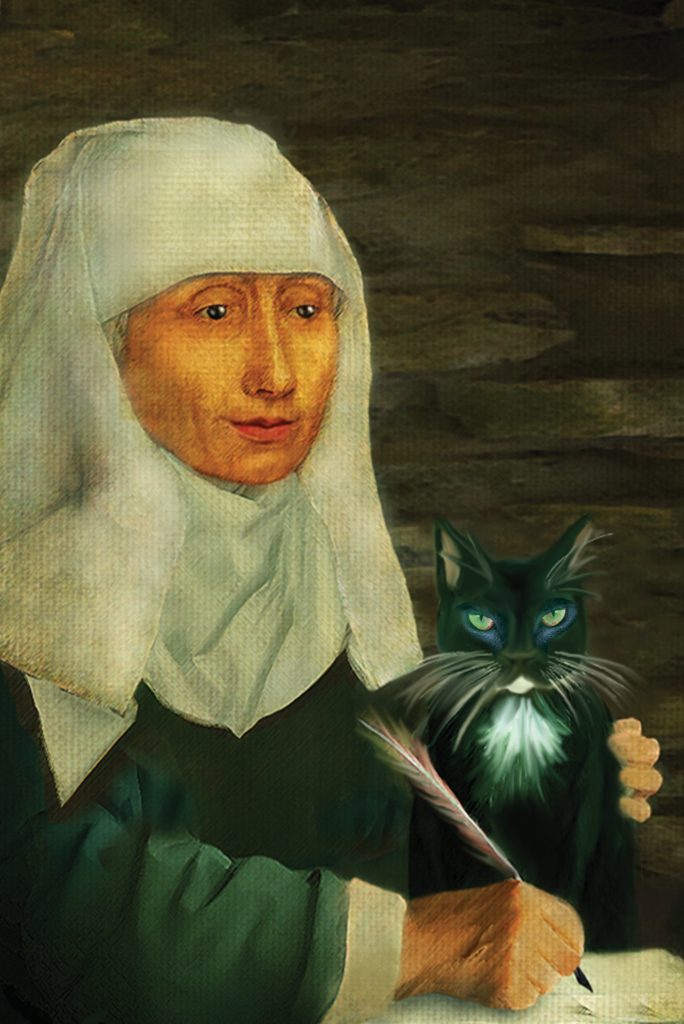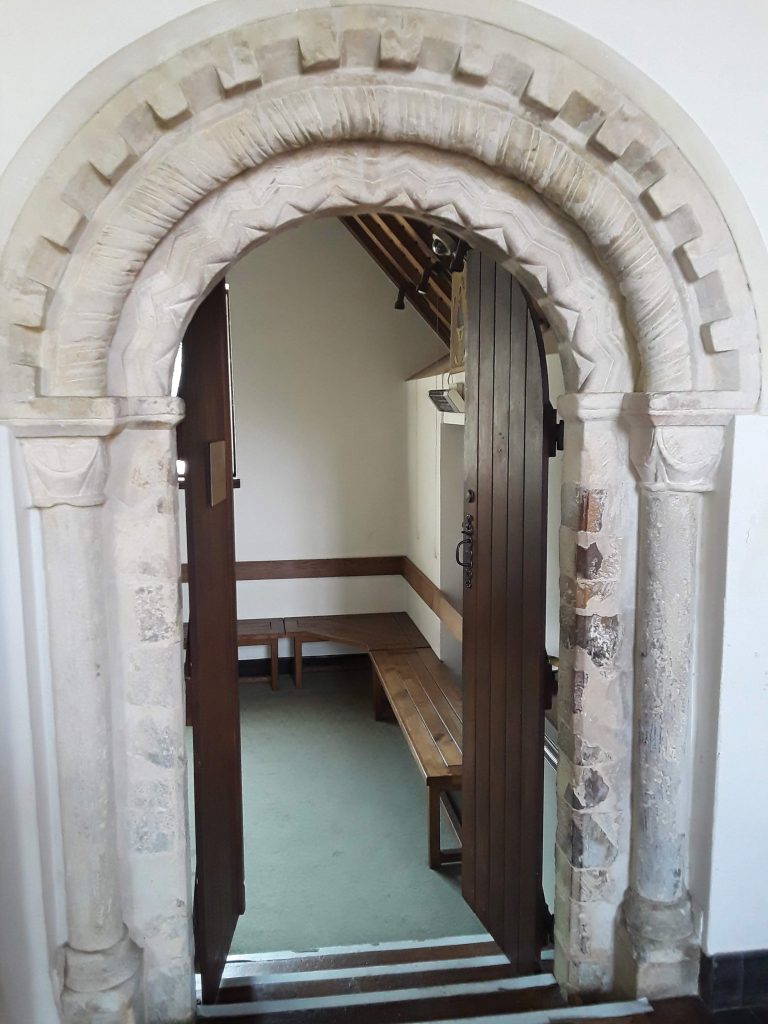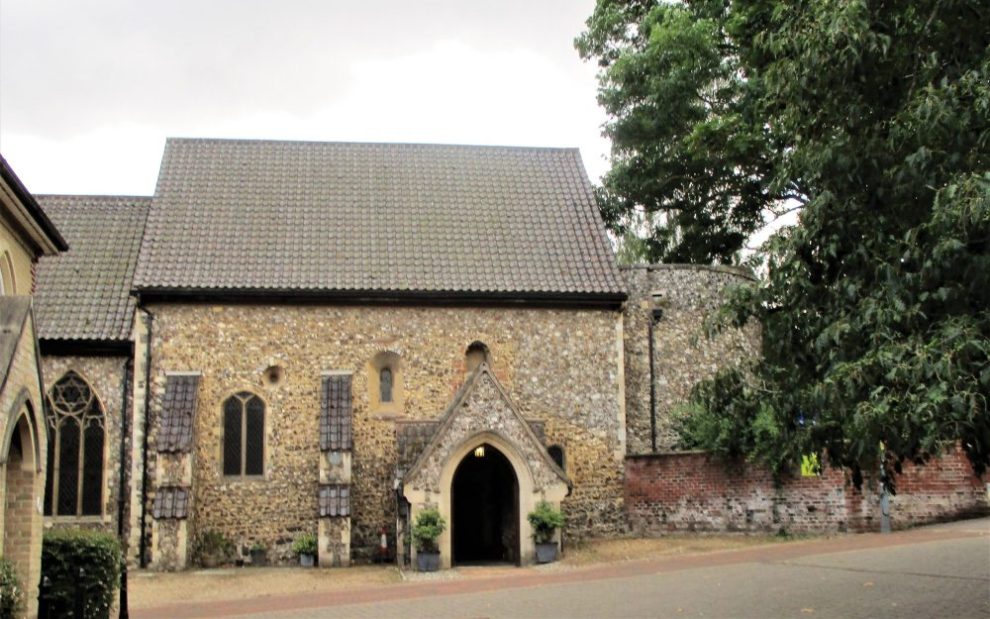At Halloween, my big brother liked to terrify me with stories about live burial. While our parents thought we were sleeping, he told me tales of screams rising from the earth and scratches found on the inside of caskets. I had nightmares for years to come.
I had that same sense of claustrophobic horror when I learned that tens of thousands of medieval women across Europe willingly chose to be “buried alive.”

These women—called anchoresses from the Greek word for “one who has withdrawn”—were not literally buried in the ground, of course. Instead, they were sealed into a small room (about 12 feet by 12 feet) attached to a church, usually for the rest of their lives. A requiem Mass was held before a woman entered her anchorage, and she received the last rites. As the doorway was sealed with bricks, the woman sang, “This is my rest forever and ever.” Now she would be “dead to the world.” Why, I asked myself, would any woman see this as an attractive option?
As I’ve learned more about anchoresses—and the world in which they lived—I’ve come to understand their choice. My favorite anchoress, Julian of Norwich, used her time of enclosure to develop and write a book of such joyful and powerful theology that it continues to enlighten readers today. Years of study and writing would not have been an option for her had she lived the life of a medieval wife and mother.
An anchorage gave a woman something not available to most women in the Middle Ages: what Virginia Woolf called “a room of one’s own”—a protected, private space where the creative, spiritual, and intellectual life could flourish.
An anchoress’s life was also not quite as claustrophobic as I’d first imagined. Most anchorages had access to a small, enclosed garden. A room for a servant woman was sometimes attached to the anchoress’s cell; the servant was responsible for bringing the anchoress food, doing her laundry, and disposing of the daily contents of her chamber pot. The anchoress and her servant often formed a lifetime bond within a private room, undisturbed by men’s interruptions.
The anchorage also had two windows into the outside world: One opened into the church, so the woman could hear Mass and receive the Eucharist, and the other opened to the outdoors. Anchoresses could chat with visitors through their windows, and they filled an important role as spiritual counselors for the community. Anchoresses were even allowed overnight guests (so long as they were women).
Most anchoresses, unlike Julian, did not write books—but they did read them. An entire new genre of literature developed targeting the spiritual growth of anchoresses. In reality, these books were probably also an attempt (by men) to regulate these women’s lives, removing the freedoms they enjoyed despite (even because of) their enclosure. “Love your window as little as you possibly can,” is one example of the guidance in these books, as well as this restriction on having visitors: “Two nights are enough for anyone to stay, and let that be very seldom.”
The warnings found in these books tell us quite a lot about the realities of life in an anchorage. One author, for example, indirectly reveals that anchoresses were often busy with occupations other than prayer and contemplation. He forbids the anchoress to weave, spin, embroider, make her own clothes, grow her own food, or make money by selling her handiwork. “An anchoress fond of bargaining . . . sells her soul to the merchant of hell,” writes another author.
Historians suspect anchoresses may have sometimes contributed their perspectives to these books. This passage certainly sounds like a woman might have written it:
Once the knot of wedlock is tied, even if he is an idiot or a cripple, whatever he may be like, you must be faithful to him. . . . When he is out, you are filled with anxiety and fear of his homecoming. While he is at home, all your wide halls seem too narrow. His attention makes you nervous; his detestable clamor and his ill-bred shouting frighten you. He rails at you and scolds you and abuses you shamefully, treats you disgracefully as a lecher does his whore, beats you and thrashes you like his bought slave and his born serf. Your bones ache and your flesh smarts, your heart within you swells with violent rage, and your outward countenance burns with anger.
Based on that description of medieval marriage, no wonder so many women chose to become anchoresses! Furthermore, the joys of motherhood do not seem to have offset the pains of marriage. The same book describes pregnancy as “heaviness and constant discomfort,” labor and delivery as “the cruelest of all pains and often death,” and the child itself as bringing “more anxiety than joy” (since most children died before they were 5).

A medieval woman had very few options. She could not be an autonomous, self-sufficient individual. The security of shelter, food, and a degree of protection from violence and sexual abuse required her to choose between marrying a man—or God. Prostitution was another possibility, but it was a dangerous occupation in the Middle Ages. In fact, simply being a woman was a perilous thing. A rich woman could ensure her safety by entering a convent—but convents required dowries, which ruled out most ordinary women. An anchoress, however, did not require a dowry. It was an option open to anyone.
Life was hard in the Middle Ages. Death was everywhere; epidemics of bubonic plague swept across Europe, killing as much as 60 percent of the population, and other diseases, violence, and malnutrition claimed the lives of countless more. Meanwhile, the church considered the female body a source of corruption and temptation, and women had few legal rights. And yet, within that threatening and restrictive world, women found paradoxical opportunities in the anchorage: life despite death; freedom within restriction; spirituality while laying claim to her own body; and meaningful contributions to her community while living in isolation.
Now that I understand the life of an anchoress better than I once did, I still have no desire to be bricked into a tiny space for the rest of my life—but I have learned from these women. They inspire me to work creatively within the restrictions and limitations of my own life. When I define clear boundaries, I find my creative, intellectual, and spiritual life becomes more focused. I am someone who values solitude, but these women have also taught me I can I use alone times to nurture and inspire my contributions to the larger network of life in which I live.
Most of all, anchoresses have taught me, as Thomas Carlyle writes, that “the Universe is not dead and demonical, a charnel-house with spectres; but godlike and my Father’s!” At Halloween, we may delight in scaring ourselves with stories about death, as my brother did me—but for most of us, the reality of our own death casts a dark shadow. The anchoresses entered death willingly, however, in an act of devotion to God—and in death, they found more life.
As Julian of Norwich writes from her anchorage, “Love was God’s meaning” in everything she experienced. “Hold on to that love,” she writes, “and you will learn and understand more of the same love.”
This article also appears in the October 2023 issue of U.S. Catholic (Vol. 88, No. 10, pages 19-21). Click here to subscribe to the magazine.
Image: Wikimedia.com/Amitchell125. Mother Julian’s Church, Norwich













Add comment